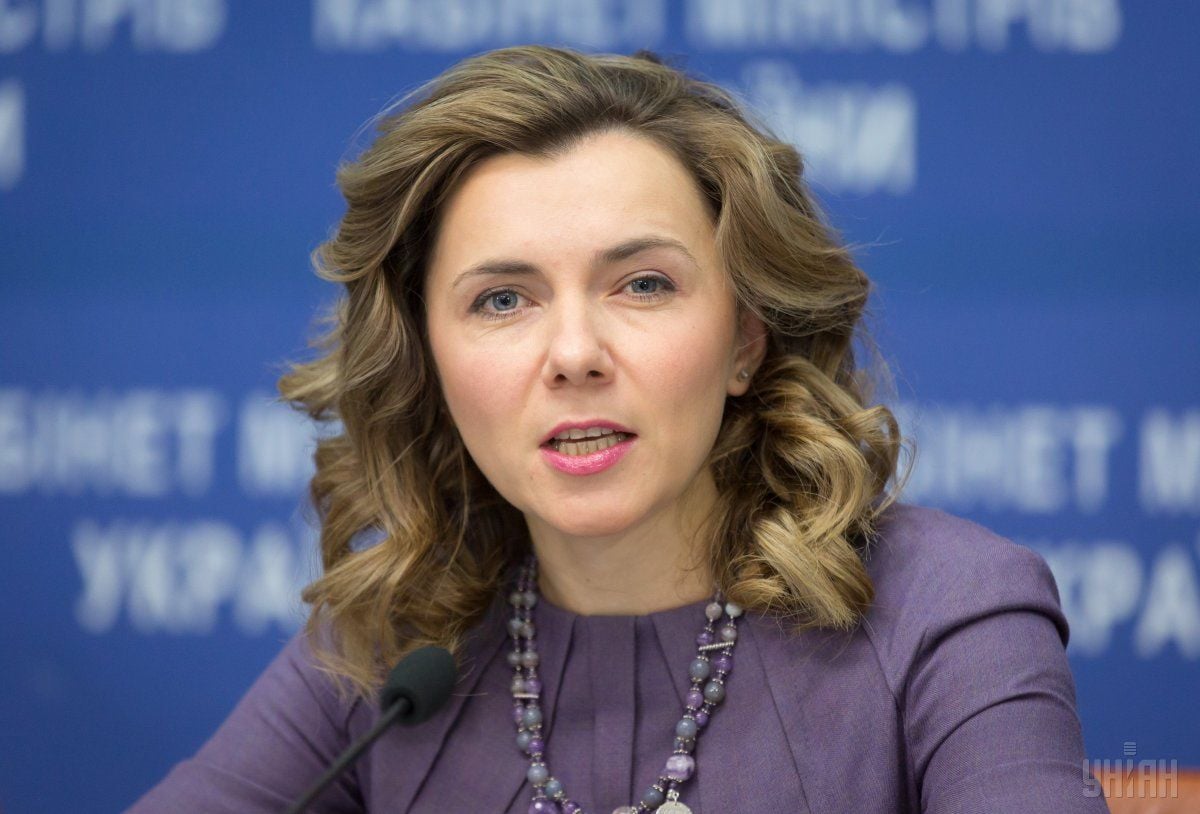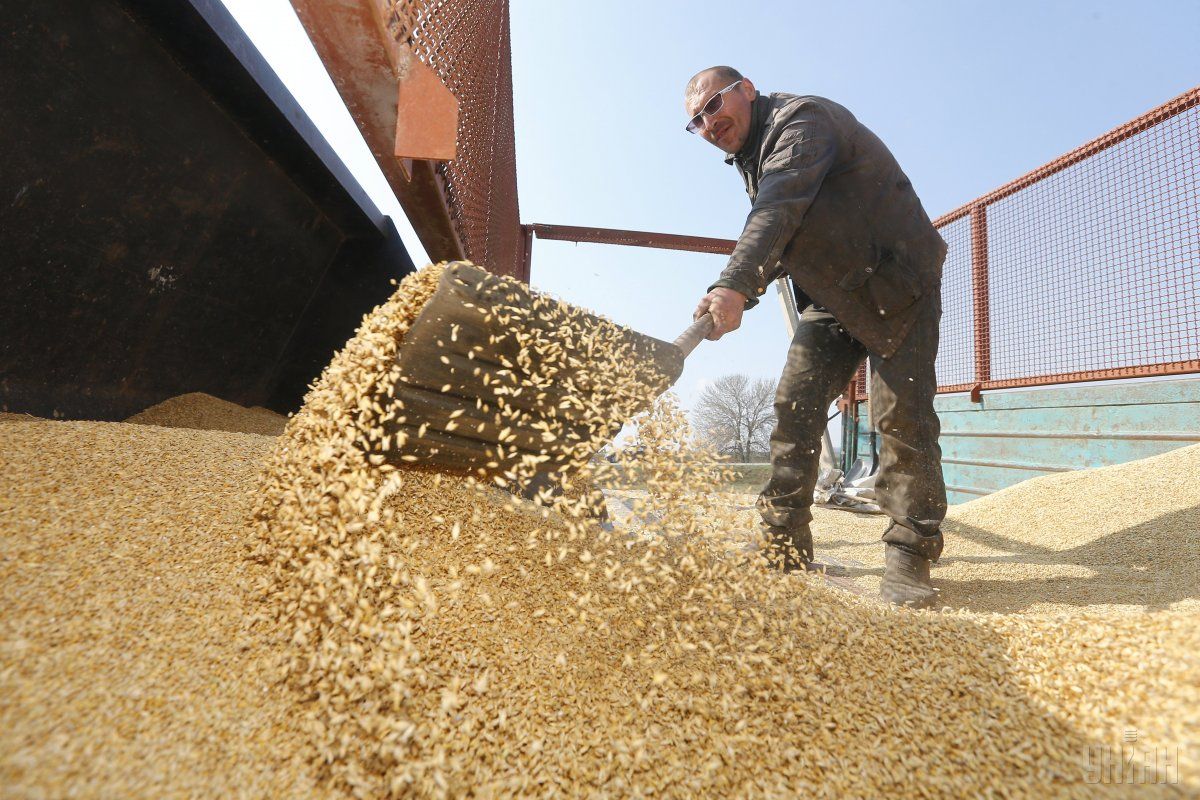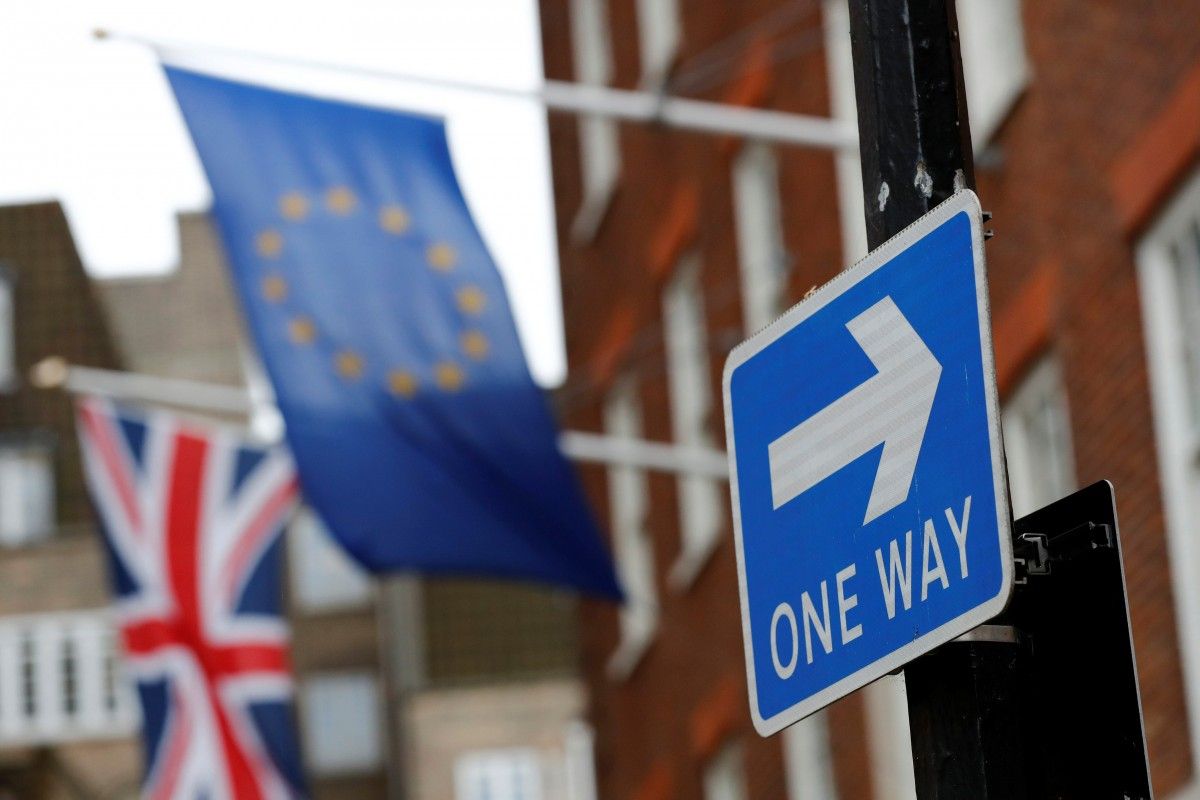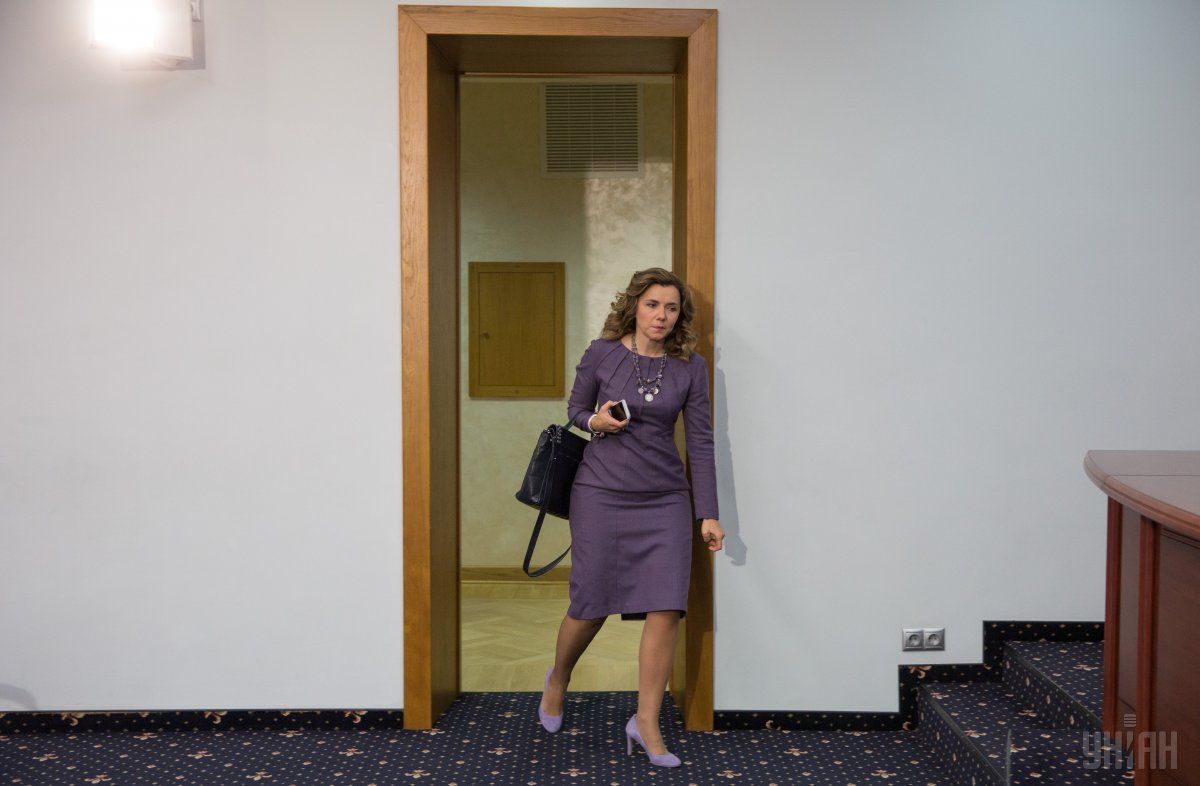
Ukraine’s Trade Envoy: Our goal is to review the terms of our free trade with the EU
Trade Representative of Ukraine Nataliya Mikolska sat down with UNIAN to elaborate on the reasons for the growth of Ukrainian exports in 2017, the launch of more free trade areas, the main export trends toward Europe, and to tell us why Ukraine wants to review the terms of its free trade with the EU.
Ukraine’s foreign trade has over the past few years been severely affected by Russia's trade aggression and low global prices for raw materials. Having lost their traditional markets of the CIS countries, Ukrainian businesses are going through a difficult stage of reorientation to the European market. The Ukraine-EU Association Agreement, designed to ensure free trade, came into full force on September 1. European officials have repeatedly stated that their Agreement with Ukraine is one of the most extensive and preferential ones. But while the ink was still wet on the ratified documents, the Ukrainian Cabinet announced the need to review the terms of free trade.
Ukraine's Trade Representative Nataliya Mikolska told UNIAN about the reasons why the need emerged for such revision, as well as about the main trends in the country’s foreign trade.
The first question to you is about the growth of Ukrainian exports. We see positive dynamics, so there is something to rejoice over. What causes such growth? Is it the relatively high global commodity prices which contribute to this or are we talking about an increase in the actual volumes of supplies?
Ukrainian exports for six months increased by $4.3 billion, that is, we see a 22.1% growth. Exports of ferrous metals, grain crops, ore, slag, and ash have grown most. The rise in in our exports of machine building products was also pleasing (almost by $240 million). In total, these five commodity groups accounted for more than 65% percent of the total exports increase. If you look from the point of view of the increase in physical volumes, the greatest growth was in grains, salt, sulfur and plaster materials, fats and oils, food waste, confectionery, and sugar, and also seeds of fruits and oil plants.
We believe that our exports were influenced both by a favorable situation with world prices for some products, and not very favorable with other groups. If we look at ferrous metals, we see the increased price but the physical volumes have fallen. With the ore, we see increased cost parameters, while the physical volumes have dropped. At the same time, for example, the exports of paper and paperboard have declined in terms of cost, while growing in physical volumes. Exports of processed vegetables decreased by $4.3 million, while shipments increased by 1,000 tonnes.
Objectively, the growth in exports was strongly influenced by the increase in prices on world markets for steelmaking products and ore, but if we are talking about the growth of exports of machine building products, t is about increased supplies of expensive products, the prices of which are less subjected to fluctuations.
Our main trading partner is the European Union. The Ministry of Economic Development and Trade noted that exports to the EU are gradually changing their structure - Ukraine is beginning to supply goods with higher added value. What are the main trends of trade with the EU this year?
If we start with figures, the export of goods to the EU member states for the first 7 months of this year amounted to $9.5 billion, having increased by $2 billion, while in percentage terms the growth is by almost 26%. There is a trend toward the increase in the volume of our goods supplies to the EU market. The EU’s share among Ukraine’s trade partners is now at 40%. Ukrainian companies are becoming part of the added value chain by supplying to the European Union spare parts or other components that are used in the EU for the production of finished products. One of the most striking indicators is the car cluster, some types of primary processing of vegetables and cereals.
Exports of finished goods from Ukraine to the EU member states increased by 18.4%. The once-scarce cases of deliveries of finished goods and the entry of new goods to European markets have become a trend. The growth of supplies is seen for many groups of goods, including boilers, machines, mechanisms, mechanical devices, furniture, clothing, ferrous metal products, and primary food processing products. In general, over the 7 months of 2017, the increase in exports for 44 non-commodity groups has brought almost $500 million. If you look at where we grew most in non-commodity goods, it’s electrical machines and equipment, furniture, food industry, ferrous metal products, sea and river vehicles.

We believe that the statistical indicators of growth should be compared with the rate of growth of a number of companies that supply goods to the EU market. Together with the State Fiscal Service, we conducted a study and we found that in 2012, some 10,000 companies supplied their products from Ukraine to the EU. If we look at 2016, there were already some 13,400 companies. If we look at the first quarter of 2017, there already were 7,800 such companies. We see that the number of Ukrainian businesses supplying their products to the EU has constantly been growing.
Skeptics may say that this is all about restructuring: companies unbundle, multiply, and open subsidiaries. This trend does exist, but it cannot represent more than 3%-5% of the total increase in the number of enterprises exporting goods to the EU. We already have 63 Ukrainian enterprises that have obtained permits to export food products. At the same time, 29 enterprises obtained export rights after the provisional measures of the Ukraine-EU Deep and Comprehensive Free Trade Agreement were enforced.
We already have 140 enterprises which were granted in the EU a status of an authorized exporter. These are the enterprises that have been exporting goods for more than a year and have a history of relations with European partners.
All these figures indicate that the EU market is not some kind of a European integration goal of the state but the market in focus of Ukrainian businesses. More and more Ukrainian enterprises are no longer eying only theoretically our DCFTA with the EU. Businesses begin to discover new opportunities.
In the context of strategic trade issues with the EU, the Ministry of Economic Development and Trade declared its will to review the provisions of the free trade agreement in order to deepen bilateral economic relations. An option was voiced to create a customs union, as well as an opportunity to expand access to the markets of various commodity groups. What are the priority options for deepening free trade, given the ambiguous experience of Turkey, which is already in a customs union with the EU?
The Turkey precedent is the only one that everyone is looking at but more precedents may emerge in the near future, in particular in the process of Brexit.
The negotiation process on Ukraine-EU DCFTA was completed in 2012. In fact, a rather long period of time has passed since the talks completed. The structure of Ukraine’s economy as well as that of the EU has changed since then, therefore it is necessary to conduct a joint evaluation of the Agreement and look at the priority areas.
Our goal is to review the terms of our free trade with the European Union. Here I would like to note that it is not about revising the terms and conditions of the Association Agreement as a whole. This is about a review of the association agreement’s provisions in the part that deals with free trade in goods. Why do we think that a revision is necessary? Besides the fact that the structure of economies has changed, we see that more and more enterprises are becoming part of added value chains in the EU, while more European companies are placing in Ukraine their capacities for the production of goods and their delivery to the EU market.
Our task is to agree with the EU on a joint assessment of the Agreement’s status. Whether we find an accord or not, for our part we envisage a foresight by, say, forecasting 10 years ahead in line with different models of Ukraine-EU trade and economic relations in order to understand, at what period of our relations it will be economically viable to start talking about a customs union, and what is the best format for such discussions.
It is very, very important for us to have an action plan backed up by different models for assessing risks and benefits. All of this will allow us to lead a more reasoned discussion both at the level of European institutions and at the level of member states.
It is important to emphasize that when we talk about changing the format of our trade with the European Union, we do not refuse to implement the provisions of the Association Agreement, especially as regards reforms. Our position lays with the fact that the implementation of the Agreement is necessary, first of all, to Ukraine and Ukrainian businesses. The second point here is that the implementation of the deal’s provisions in terms of trade will enable us to talk more persistently with the EU about changing the format of our trade. And, of course, the third point is that the implementation of the trade part of the Association Agreement brings investment to the Ukrainian economy. In order for investments to come, it is necessary to implement the provisions of the Agreement.

In the context of Brexit, does Ukraine negotiate with Britain about the format of trade relations after UK withdraws from the EU? Will the UK’s negotiating process on the withdrawal from the EU and the format of further trade relations create a precedent for deepening the free trade area between Ukraine and the EU?
Any scenario has two options: the first is to sit and wait, saying that "there is a huge crisis within the European Union, so what can we do?” while the second one is to look at any crisis as an additional opportunity for Ukraine. Our position is that the situation with Brexit should be perceived as an additional opportunity, of course, without violating international law. Our export strategy defines Britain as one of the countries with which Ukraine has been dragging in trade. In this regard, we have a direct interest in not only maintaining our relations with Britain at the current level, but also deepening them.
We see that after the UK withdrawal from the EU we will be able to get a free trade area of a different format, which for the present structure of the Ukrainian economy can be of great importance. In this regard, we believe that it is now necessary to begin consultations with the UK on which sectors we see the largest zones of growth. Consultations can become the basis for negotiating an agreement, including a free trade area, which can be concluded after the completion of all talks.
As for the EU, when the format for Brexit negotiations’ completion is evident, Ukraine must realize whether it bears any losses, does this affect in any way the current trade regime with the EU, and how should Kyiv proceed. The issue will be one of the parts of the foresight so that after the final definition of the Brexit format Ukraine could be ready for consultations with both UK and the EU.

You mentioned the growth of exports to the EU of woodworking industry products. Perhaps the Ministry of Economic Development did an analysis on whether this growth was connected with the moratorium on roundwood exports?
In the context of increased supplies to the EU of our furniture, for example, we believe that the main reason is that the Association Agreement, its trade part, is functioning. Ukrainian companies managed to find their way to the EU market and are able to supply their products there. It is important to mention that since the moratorium was imposed [it is valid for 2 years) it has not even been easy to set up and launched a full-fledged production of furniture, not to mention starting to supply products to the EU. Therefore, we believe that the main reason for the boost is the growing number of Ukrainian enterprises, which, in particular, were earlier focused on the market of the CIS countries and are now starting to look at the EU.
The government at its recent meeting approved a bill on Ukraine's accession to the PanEuroMed Convention. What opportunities are now opening to exporters in the context of this move?
PanEuroMed is an additional opportunity for Ukrainian companies to export both to the EU market and to the markets of third countries. It is about the economic nationality of the goods. What does the convention give us? We all live in a globalized world and we do understand that in order to, say, make a dress, one needs fabric and accessories like buttons, zips, and other things. As a rule, all these things are not supplied from a single state. Companies buy it all from different countries. If in the light industry fabric was bought in the EU, while products were made in Ukraine to be exported to the Norwegian market, these products did not meet the criterion of Ukraine origin, although they were made in Ukraine. Since the fabric originated from the EU, the goods were delivered to Norway under the customs regime.
The Convention speaks of a simple principle: all mine is yours, and vice versa. If a Ukrainian company buys fabrics in the EU, makes clothing in Ukraine (not under a tolling scheme) under its own or some other brand, and delivers products to the EU market, that of EFTA member states and other countries that are part of this agreement, the goods will be considered as originated from Ukraine and will enjoy a zero import duty rate. It also works for manufacturers of spare parts and semi-finished goods. That is, the products of the Ukrainian steel-making industry, when used in the production of cars and machinery in the EU for the purpose of supplying these products to the markets of the countries I’ve mentioned, will be considered European.

It is very important to finalize the accession to this Convention so that we could sign protocols on its application with the countries, with which we have free trade areas, and lay down its rules in new agreements to be signed with them. The sectors to be affected by the accession to the Convention, of course, include the production of car components, machine building, woodworking, production of finished furniture, light industry, footwear, and food industry. I urge the businesses to get familiarized with our presentation materials on the website of the Ministry of Economic Development and Trade. There is an opportunity to get more information via a hotline. Ukrainian companies can already lay down in their long-term business plans positions on where they will buy the goods. The Convention will give them access to cheaper and more specific resources.
For us, the primary goal is the completion of domestic procedures this fall, to allow the Convention to enter into force from January 1. In any case, we realize that many countries will be ready to take up the conclusion of protocols with Ukraine on the application of the Convention only after the country’s accession to PanEuroMed.
How are negotiations going forward on free trade areas with Israel and Turkey?
With Israel we will have another round of talks late September. We have worked quite actively between the rounds of negotiations via videoconference and are now ready to focus on the sensitive tariff issues that are yet to be agreed. Therefore, we are up and ready to visit Israel with our negotiating team and we hope that we will yield great results.
With Turkey, we are having consultations between rounds of negotiations in terms of possible sensitive blocks. We hope that we will be able to enter the negotiation mode in the near future because Turkey, according to our export strategy, is a market in our focus. We are very much interested in having a free trade area launched with this country on mutually beneficial terms.
Maksym Shevchenko

